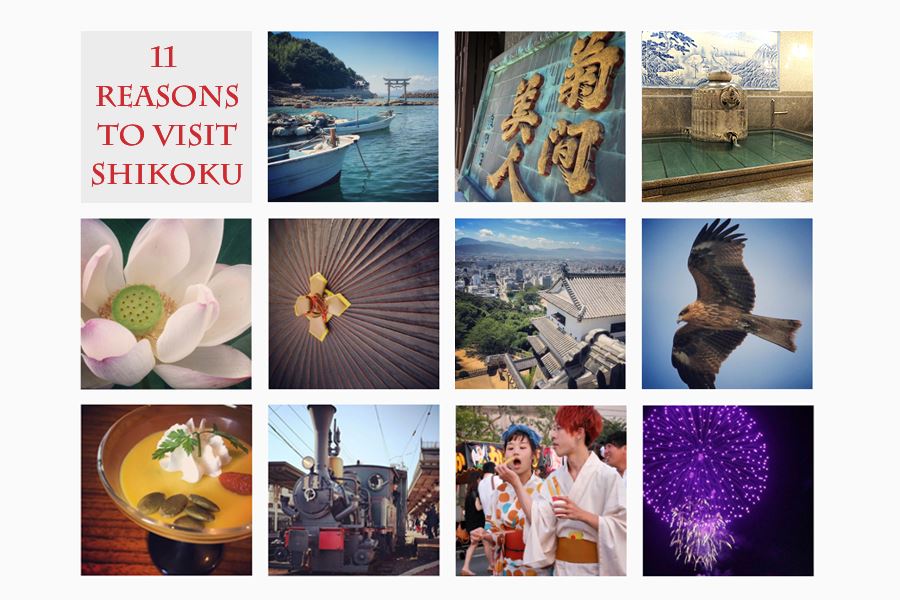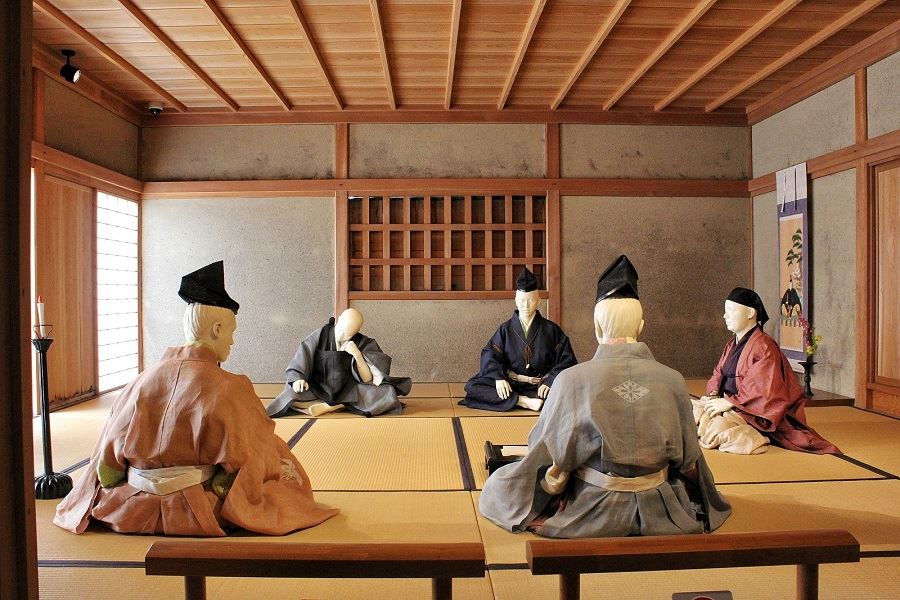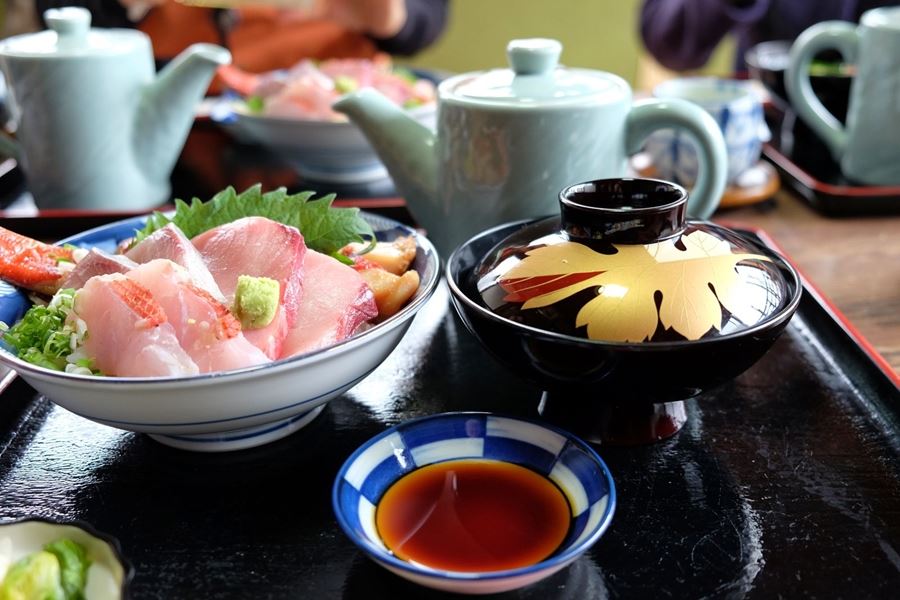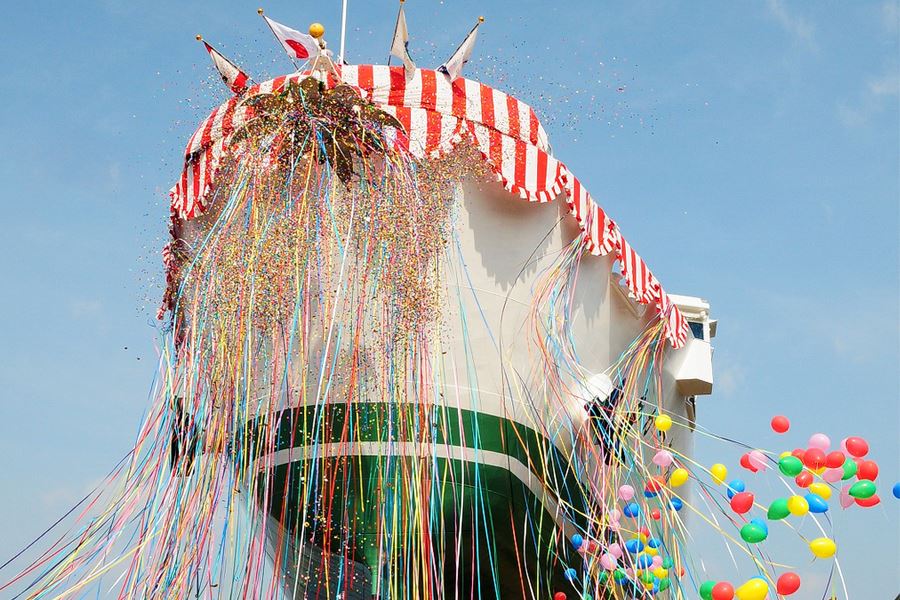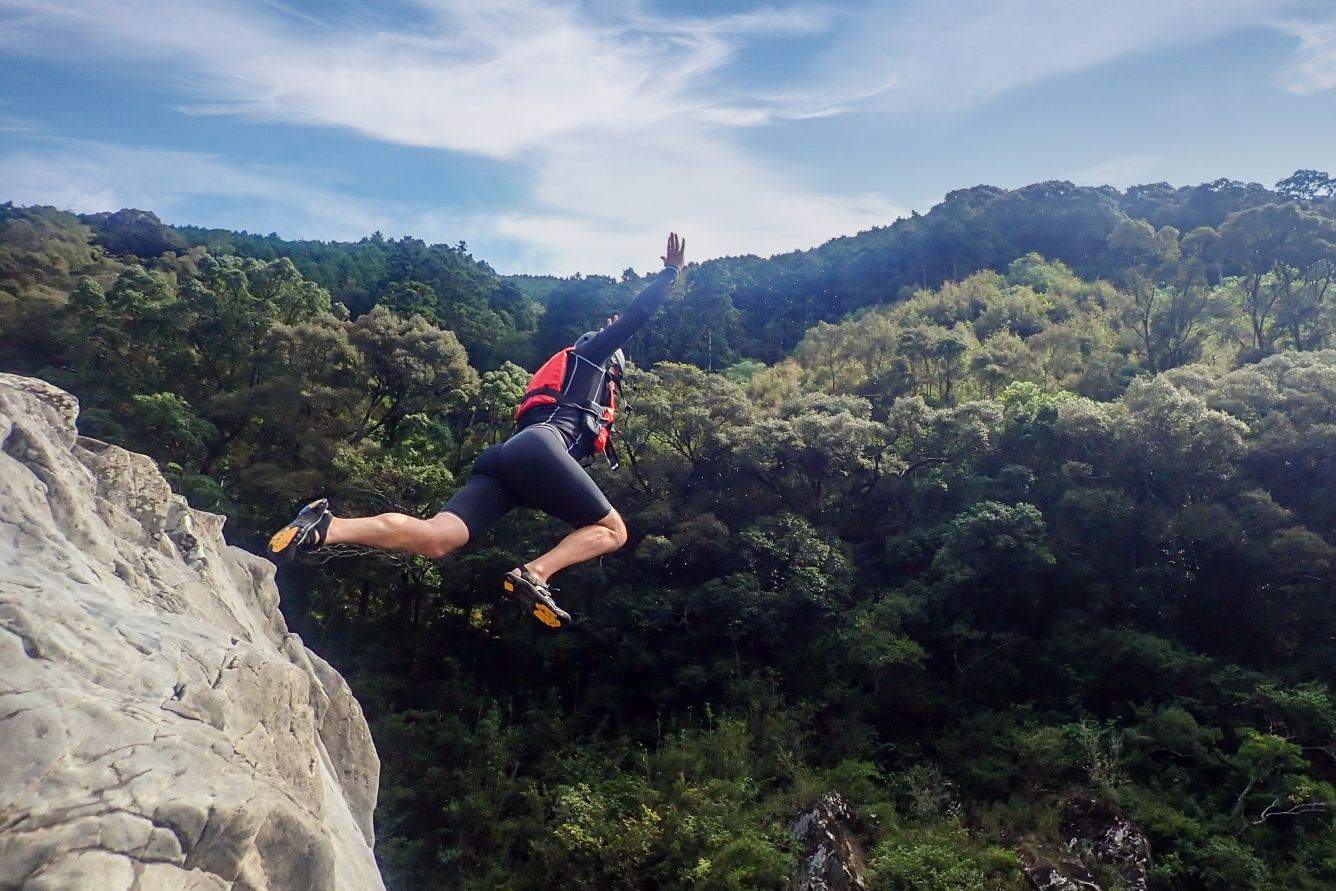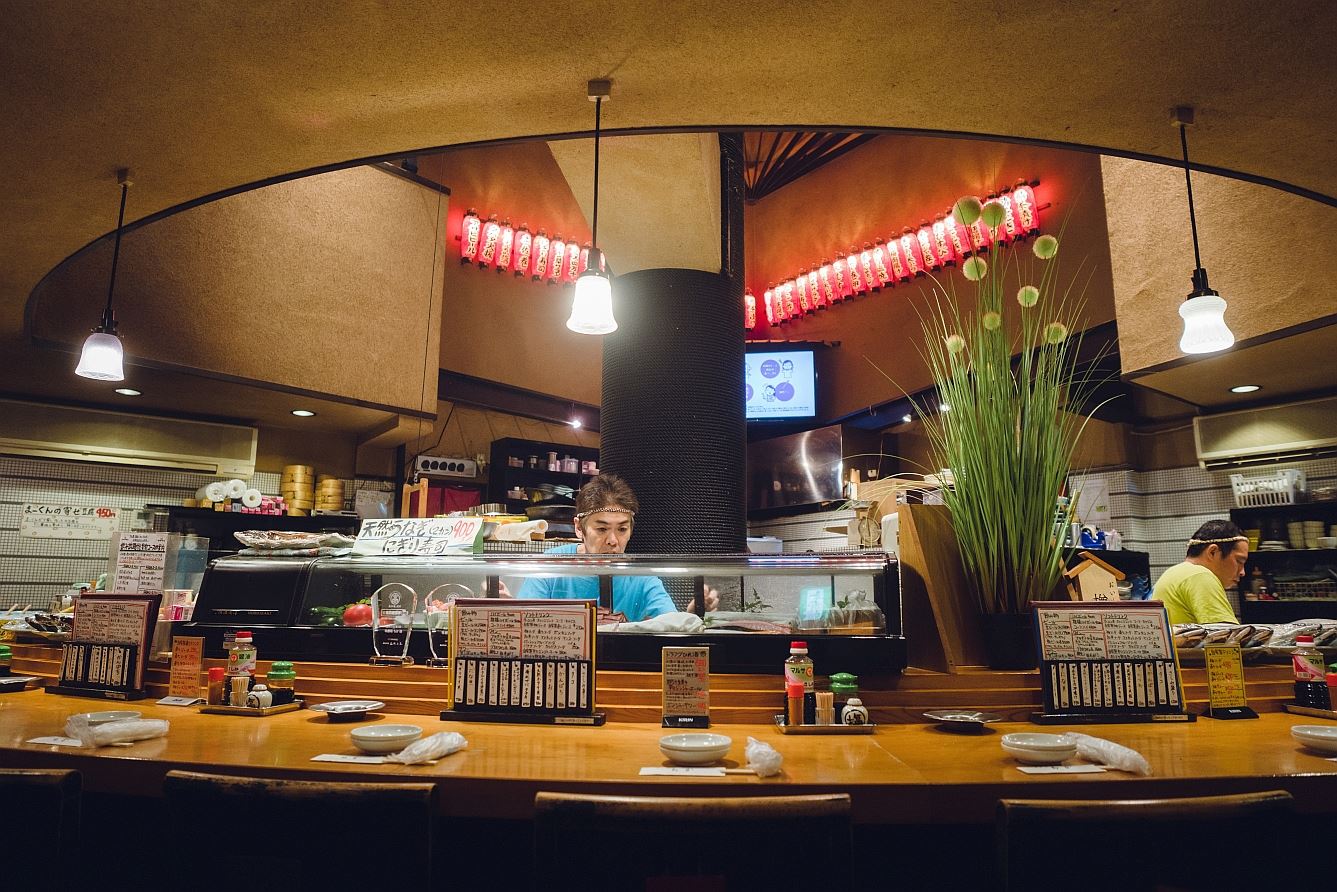Niyodo River
Home » Niyodogawa, Kōchi
Niyodogawa, Kōchi
The Niyodo River is one of the three major rivers of Shikoku, which also include the Shimanto River and Yoshino River. It rises in the mountains of central Shikoku, running southeastward through the Kōchi and flowing into the Pacific at Tosa city. There are many things to see and do along the river.
The Niyodo River
This long river is known as one of the purist and clearest in Japan, and its clean water gives it a beautiful turquoise blue colour. The local people take care to ensure that it stays this way.
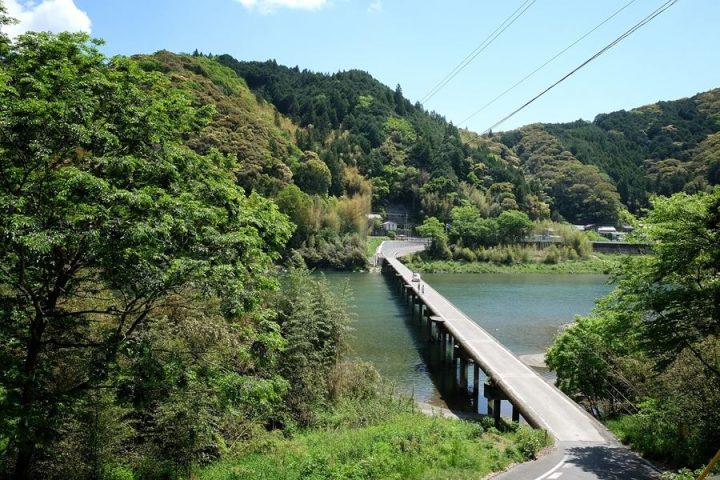
One of the evocative sights along the Niyodogawa are the ‘chinkabashi’, simple, flat-topped concrete bridges without balustrades, built at riverbank level. These are fully submerged when the river is in full spate, and their small profile is designed to enable the bridge to withstand any amount of floodwater. Warnings are painted on them urging you not to jump off into the river. These signs conveniently indicate the best places for jumping. If you do jump, be sure to prepare adequately for the shock of plunging into cold water. People die every year, mostly from heart attacks.
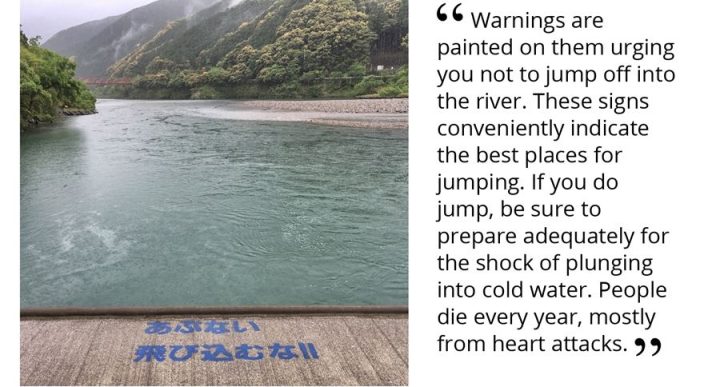
The quiet roads beside the Niyodo River are ideal for cycling, and at the Qraud facility beside the river, you can hire bicycles. You can also hire canoes and rafts for a trip down the river itself. Along the river there are pleasant eateries serving local food and sake.
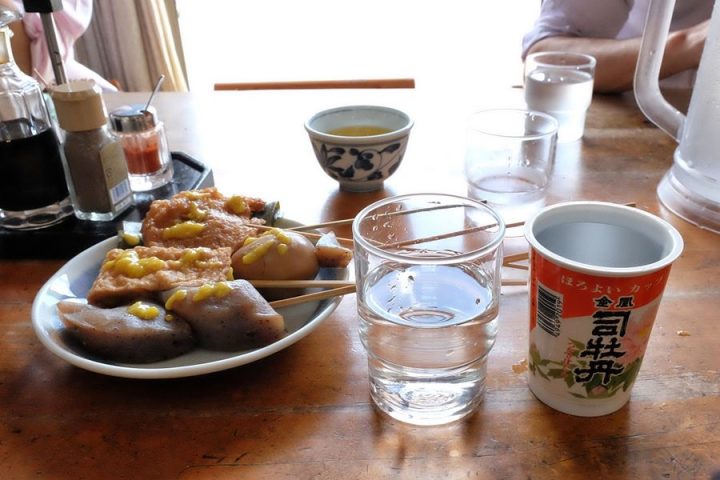
The Nakatsu Gorge
A short way up the tributary of the Niyodo River is the Nakatsu Gorge, a natural paradise of boulders and dramatic waterfalls, linked with an easily-walked path and bridges. Interesting birds dive for fish in the translucent pools between the cascades. The clear, blue water churns between the huge boulders that fill the bottom of the gorge. As the path climbs gently upwards, you pass through narrow passages and tunnels between the rocks. Everything sheltered is coated in ancient moss.
Towards the top of the gorge, the path is steeper and the sound of falling water becomes more intense. Several bridges lead into a couloir with a spectacular waterfall that pours in numerous streams into pools at different levels. The spray thrown up creates rainbows in the sunbeams that penetrate into the cavernous space. Leaves drifting down from above complete a magical scene.
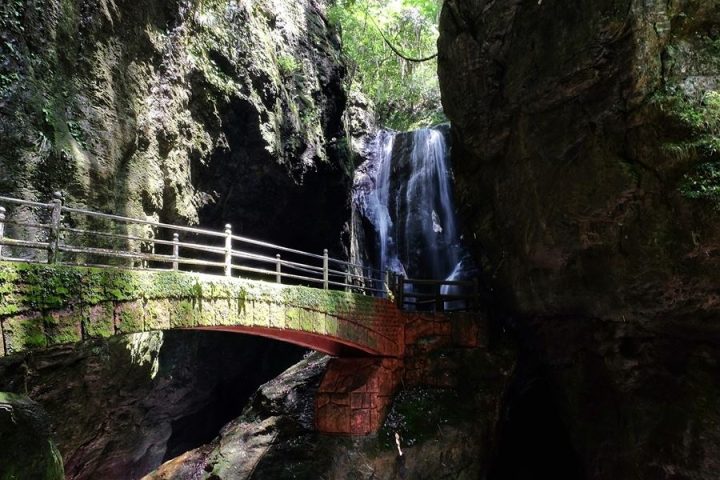
The Ino-cho Paper Museum
The Tosa domain is said to have learned paper-making from the next-door domain of Iyo to the north. Traditionally, Japanese paper called ‘washi’ was made using the bark of the paper mulberry and a paste derived from a type of vine. In the Edo period, Tosa washi gained renown when sets of paper in seven colours were presented to the Shogun. In the Meiji period, Yoshii Genta laid the foundation for the development of the paper industry by developing fine tissue paper which extended the many applications of paper.
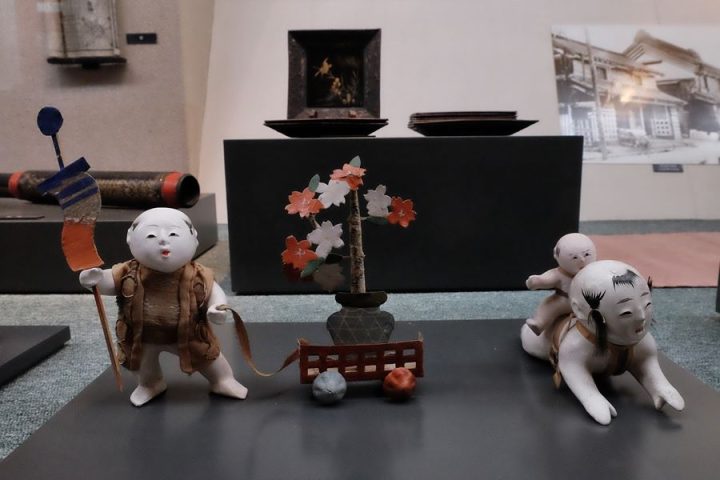
The Ino-cho Paper Museum located on the Niyodo River comprises a museum, a workshop, an exhibition space, and a shop selling a surprising range of beautiful articles made from paper. The museum covers both the history of paper-making in Kōchi, and the processes used to make it. The process is very laborious and it requires finely constructed equipment, all of which is presented in attractive displays that are testament to Japanese manufacturing skills passed down through the ages.
In the workshop, you can see craftspeople making washi paper the traditional way. For a small fee, you can try your hand at making washi postcards under the patient guidance of an expert. There’s a feeling of immense satisfaction in gradually converting sloppy pulp into crisp, flat sheets of paper using a sequence of controlled movements that engage the whole body. The work has an almost meditative quality.
Sakawa
The town of Sakawa is located on a southern tributary of the Niyodo River and to the east of Kōchi city. This little town has many points of interest, including Kōchi’s oldest brewery, Tsukasabotan, and buildings dating back to the Edo and Meiji periods. There’s a very fine samurai residence with an elegant garden next to the home of a powerful merchant, and a European-style wooden building that served as a police station.
Before touring the town, it’s interesting to visit the Local Industry Centre which serves as a tourist information centre. On the second floor there are wooden models of all the main buildings of Sakawa, meticulously crafted by a retired gentleman of the town. They’re accurate even down to the last tatami mat, and the roofs can be lifted off to see all of the details within. The volunteer guides offer a wealth of information about the town and region.
There used to be several breweries in Sakawa, thanks to the abundant water and rice of the region, but they gradually amalgamated into Tsukasabotan, the only brewery that remains today. Tsukasabotan features a remarkable long storehouse where the sake is kept in tanks. In the old days, the tanks were made of wood, but in 1955 when the brewery decided to use taller metal tanks, the entire storehouse was cranked up so that a new concrete footing could be added underneath the walls. When you see the size of the building, you’ll appreciate what an elaborate task it must have been. The brewery has a very attractive shop where you can try the products and purchase sake and souvenirs.
Up the hill behind the brewery is a beautiful Zen temple, Seigen-ji, with greenery that changes with the seasons.
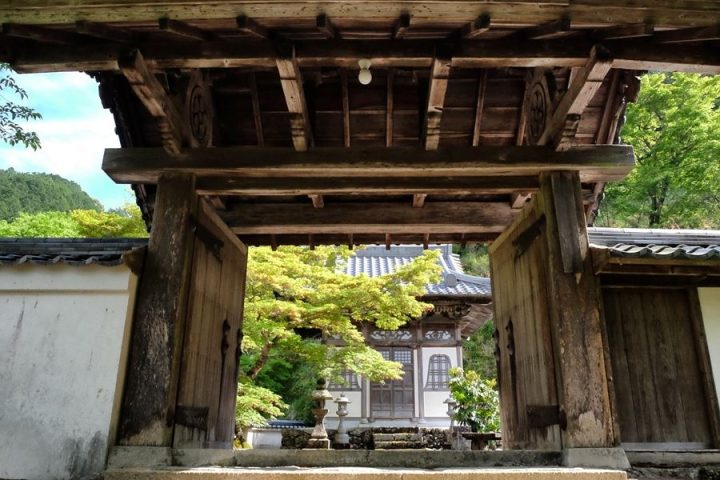
To plan a tour of the area, use our handy enquiry form.
Related Tours

Experience the most beautiful and interesting temples of the Shikoku Pilgrimage in seven days.

A tour for families or friends, staying in the most characterful kominka and ryokan of Shikoku.

Visit the most beautiful and interesting temples of the Shikoku Pilgrimage and walk the toughest trails.

